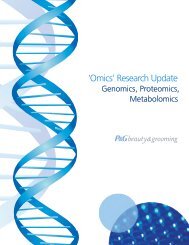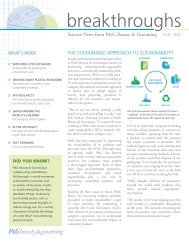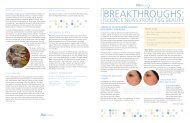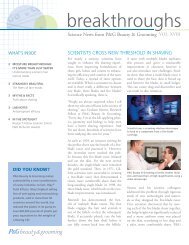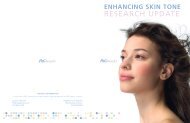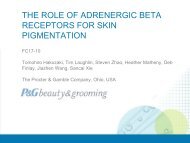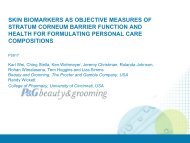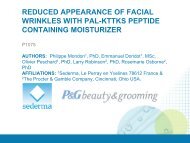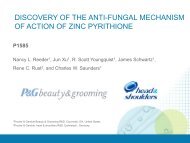utilizing proteomics to characterize hair and hair damage
utilizing proteomics to characterize hair and hair damage
utilizing proteomics to characterize hair and hair damage
You also want an ePaper? Increase the reach of your titles
YUMPU automatically turns print PDFs into web optimized ePapers that Google loves.
RESULTS: ALL HAIR LOSES PROTEIN<br />
• Protein loss can be detected<br />
after just 5 minutes of exposure<br />
<strong>to</strong> water<br />
• Protein loss increases with time<br />
• Chemically <strong>damage</strong>d <strong>hair</strong> loses<br />
more protein than virgin <strong>hair</strong><br />
• Measuring protein loss provides<br />
early detection of <strong>damage</strong>,<br />
before it’s <strong>to</strong>o late<br />
Protein Loss (ug/ml)<br />
350<br />
300<br />
250<br />
200<br />
150<br />
100<br />
50<br />
0<br />
5<br />
10<br />
15<br />
Virgin<br />
Bleached<br />
20<br />
30<br />
40<br />
50<br />
60<br />
5<br />
10<br />
15<br />
20<br />
30<br />
40<br />
50<br />
60<br />
Extraction Time (min)<br />
• Protein loss at 60 minutes is equivalent <strong>to</strong><br />
approx. 0.1% of <strong>to</strong>tal protein from virgin<br />
<strong>hair</strong> <strong>and</strong> 0.4% from bleached <strong>hair</strong><br />
(measured by Modified Lowry assay)




